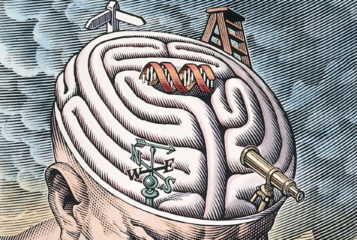Researchers have sequenced the entire genome of an 18 and a half-week-old fetus using DNA samples from the blood of its mother and saliva samples from its father. These findings provide a proof of principle that a fetus can be examined for genetic conditions using non-invasive technologies.
Currently, non-invasive screening is used to detect conditions where there is an extra copy of a chromosome, known as trisomy - including Down's syndrome, where there are three copies of chromosome 21.
This study, published in Science Translational Medicine, shows that it is possible to non-invasively sequence the whole genome of a fetus and to use that to check for smaller changes in the DNA, including more than 3000 single gene disorders.
'If the genome is a book, and a trisomy is an extra chapter, we want to find every typo', lead researcher Dr Jay Shendure of the University of Washington in Seattle told New Scientist.
Single gene, or Mendelian, disorders affect around one percent of live births, and include cystic fibrosis and Huntington's disease. Currently, a small number of specific Mendelian disorders are screened for during pregnancy, but this requires the use of invasive procedures that increase the risk of miscarriage
The team of researchers, primarily based at the University of Washington, exploited the fact that around 13 percent of DNA in a pregnant woman's blood plasma - known as cell-free DNA - originates from the fetus.
Looking for small variations in the letters of the genetic code, they compared the sequence of the cell-free DNA to the mother's DNA, which was sequenced from a blood sample, and so would be 100 percent her own. Any variants found in the cell-free DNA but not in the DNA from the mother's blood were assumed to have come from the fetus.
Further confirmation that these were sections of DNA from the fetus was made by comparing variants to the father's DNA, which was sequenced from a saliva sample. Variants unique to him that appeared in the cell-free DNA must have been inherited by the fetus.
After birth, the baby's genome was sequenced from cord blood, showing their predictions were 98 percent accurate. They also tested their techniques on a second pregnant woman with an 8.2-week-old fetus, with 95 percent accuracy, which suggests these methods could be used to screen very young fetuses.
As well as heritable variants, the researchers looked for spontaneous mutations, identifying 39 of the 44 that were discovered after birth. However, both the New York Times and Science Now reported that they also identified 25 million false positives.
Dr Shendure suggested that the technique could be available in the clinic within five years, estimating the cost at $50,000 per child. However, he warned that the ability to read the genome and find genetic variants far out-strips our ability to understand the consequences on the development and health of a child. 'There will be many mutations whose impact we just don't know', he told Science Now.
Professor Dennis Lo, the pathologist who first discovered that fetal DNA circulates in the mother's blood, has urged caution. Speaking to Science Now, he said: 'I don't think it would be ethical to use this to screen for late-onset diseases like Alzheimer's or cardiovascular diseases, for example'.







Leave a Reply
You must be logged in to post a comment.